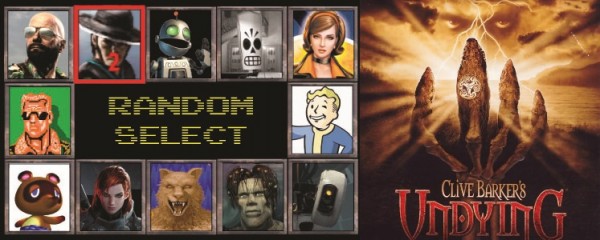
The Game: Clive Barker’s Undying (2001)
Developer: Dreamworks Interactive
Publisher: Electronic Arts
System: PC Buy It On Amazon: RIGHT HERE
The Premise: The year is 1923. As a child, Jeremiah Covenant and his siblings performed a pagan ritual as a children’s game at an ancient monolith site near their home, and ruin and perdition has followed the Covenant siblings ever since. Now, with his health failing and haunted by visions and manifestations of his brothers and sisters transformed into hellish demons, Jeremiah has called upon his old friend, mercenary/paranormal investigator Patrick Galloway, to help in preventing his fall under the curse as well, but Galloway will soon found out that the Covenant family are but pawns of a greater evil that seeks to be reawakened.
Is It Any Good?: It’s a damn fine Horror FPS, and easily one of the best examples of developers taking the road and example laid by Half Life and expanding it to create fresh, original FPS experiences.
While Undying clearly benefits the most from having Horror master Clive Barker behind it, its oddly a strange and downright example of an author taking a chance to go beyond his established themes and playing grounds. Undying has all the marks of Barker’s work: gore in spades, hellish landscapes and character designs, the themes of family, betrayal and corruption, etc. However, the choice of a pulp style setting and hero were an inspired and rather brave choice by Barker and the development team, as it’s clearly quite apart from the famous writer/filmmaker’s established works. Galloway and his tale of post-World War I horror and haunting feels like a modern take on Solomon Kane, with a dash of John Carter and Doc Savage, and a huge infusion of Lovecraft.

Enter the spells and weaponry of Undying. As a paranormal investigator, Galloway can learn and master the use of several spells and weapons through the game, and can equip one of each in either of his hands. The use and combination of different weapons and spells is key to surviving, and also add an extra layer of challenge. Each weapon/spell has weaknesses and bonuses. For example, a key weapon is Galloway’s Gel’ziabar Stone talisman, which makes spells more powerful but only provides defensive power as a weapon; another example is the Scythe of the Celts, a powerful cursed melee weapon that severely hurts your mana sources. But the amazing part is the use of some spells playing havok with the entire gameworld, the MVP being the Scrye spell, which allows the player to see supernatural beings and discover the true nature of objects and characters in the gameworld, leading to some nasty and entertaining surprises, especially since the sound design, full of ethereal whispers, fading growls and more unnerving sounds provide key clues to where to use the spell…and the results are usually horrifying.

Bonus Points: The game was to feature a burlier and more “hardcore” protagonist called “Count Magnus Wolfram”, but Barker nixed the idea and developed pulp like Patrick Galloway instead, arguing that Galloway’s “normal, everyman physique and personality” would help player feel more immersed and affected by the horrors in game.
At one point in development, the game was meant to be a full on open-world title, which would have made it ages ahead of its time.
The original release of the game had a small replica of Covenant’s diary included in boxed versions of the game, which added backstory to the plot and set up hints/clues to the reveal of each Covenant sibling’s true, demonic nature.
The box also spoiled one of the best uses of the Scrye spell in the game, as it showed both versions of the Covenant family portrait: a normal one and one that showed the effects of the curse on each sibling, which also revealed an early twist in the game’s plot.
Barker himself voices Ambrose Covenant in the game.
Clive Barker took a second stab at game development with Clive Barker’s Jericho during the early 2000’s. The game had some solid monster design and an original gameplay mechanic that had you possessing different members of a black ops paranormal squad; however, horrible AI, lackluster story and severely underdeveloped gameplay resulted in a mediocre game at best.
MOAR LIKE THIS PLZ: Clive Barker’s Jericho, Bioshock Infinite, Amnesia, Cryostasis


